Flavors That Tell Stories: A Journey Through Colombian Gastronomy
- Sofia Ortega
- 6 days ago
- 3 min read
Each traditional Colombian dish hides an ancestral story, a blend of cultures, an exuberant geography, and an identity that can be tasted. More than just a collection of recipes, Colombian cuisine is a sensory and cultural experience that reveals who we are as a nation: diverse, creative, and deeply rooted in tradition.
Colombia doesn't have just one cuisine — it has many, as varied as its regions, climates, and people. From coconut sweets on the Pacific coast to cocido boyacense in the Andean highlands, every flavor is a bridge across generations and an invitation for discovery to those who visit us.
A Mestizo Cuisine: The Soul of Our Kitchen
Colombia’s culinary history is the product of centuries of cultural fusion. Indigenous traditions, with their roasted arepas and reverence for corn and tubers, merged with ingredients and techniques brought by the Spanish: pork, rice, spices, and the custom of marinating foods. Later, Africans arrived, contributing cooking knowledge that enriched the cuisine with fried foods, plantains, yam, and a vibrant seasoning that can be felt in every bite from the Caribbean coast.
But the evolution didn’t stop there. Asian, Arab, and European migrations added their own flavors, techniques, and spices, leaving their mark on everyday staples like tamal, envueltos, morcilla, and stews with a touch of the Orient.
The Stew (Guiso): The Heart of Flavor
In many Colombian kitchens, there’s one indispensable base: guiso (or hogao) — a simple sauté of onion and tomato that transforms any dish. It shows up in soups, legumes, meats, and even side dishes with plantain or yuca. Its comforting, familiar taste is perhaps one of the best-kept secrets of our culinary identity.
Regions You Can Taste
Andean Region:
This is home to some of the country’s most iconic dishes:
Ajiaco santafereño, with potatoes, corn, and guascas
Lechona tolimense, a festive pork and rice dish
Mondongo, chunchullos, and the ever-versatile arepa
And of course, sancocho, the generous soup that varies by region but is typically made with hen, rice, and avocado in Bogotá — like a warm hug served at lunchtime.
Caribbean Region:
The flavors of Colombia’s Caribbean coast are bold and rich in history. This coastal region is home to butifarras, carimañolas, suero costeño, and fish sancochos. Each dish pays homage to the cultural blend that defines the region: African, Indigenous, European, and Creole influences.
Unique local specialties include “Cabeza de Gato” — a hearty stew of beans and vegetables — and “Suero de Atollabuey,” a tangy cream used to accompany everything from yuca to meats.
Paisa Region:
The famous bandeja paisa needs no introduction: beans, rice, ground beef, crispy pork belly, egg, chorizo, ripe plantain, avocado, and arepa — a full feast. But Antioquia also offers delights like mazamorra with guava paste, light broths (caldo), and the hearty breakfast leftovers known as calenta’o.
Colombian Coffee: A Legacy in Every Sip
Visiting Colombia also means immersing yourself in the aroma of its coffee. More than a beverage, coffee is part of the country’s soul. Since its introduction by the Jesuits in the 18th century, it’s been cultivated in dreamlike mountain ranges like the Coffee Axis, Huila, Antioquia, and Santander.
Each region has its own profile:
Huila coffee is floral and bright–
Antioquia’s is smooth and fruity–
Santander’s is deep with chocolate notes
Exploring these coffee landscapes is not only a visual delight — it also helps explain why Colombian coffee is globally renowned for its quality and flavor.
A Country to Taste… and to Read
Colombian gastronomy has also been a source of literary inspiration. In his works of magical realism, Gabriel García Márquez immortalized flavors and aromas that are now part of the nation’s collective imagination: rum, sancocho, panela, coffee… foods that evoke nostalgia and a sense of belonging.
Come to Colombia and Taste Its History
In every traditional dish, in every cup of coffee, you’ll find an open door to the diversity, creativity, and soul of a country that expresses — and falls in love — through its food.














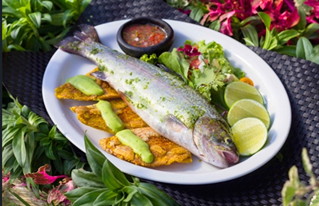
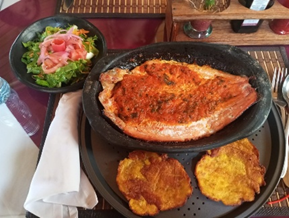





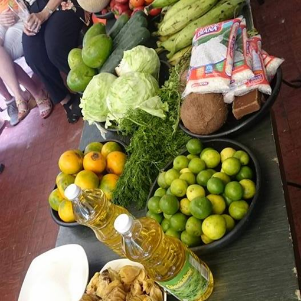











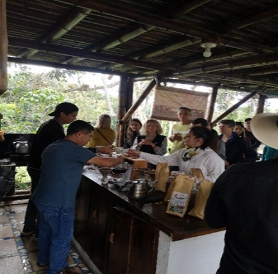

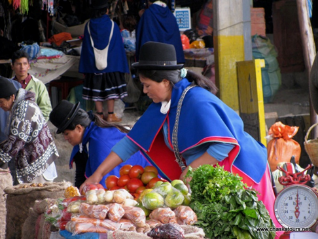
Comments